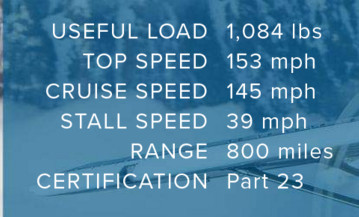You should look at the plastic card you have 
It can’t just say “instrument pilot” without saying something like “private”.
I have a piggy-back FAA IR; I did the standalone FAA IR exam and checkride. Does that mean I have a valid FAA license (PPL) so can therefore fly an N-reg anywhere?
How can you have an FAA IR without any underlying FAA license?
You must have at least an FAA 61.75 piggyback PPL. Then you had two options for the IR
You can fly an N-reg on a non-FAA license but only in the airspace of the country which issued it so e.g. with a UK CAA issued EASA PPL (or NPPL or LAPL for that matter) you can fly an N-reg only in UK airspace.
Thanks – that is really helpful.
Just clarify, I have an EASA PPL but no FAA PPL (just an FAA IR). Will my EASA PPL suffice, do you think?
According to their website is it Part 23 certified and if that’s true then you can keep it in Europe just like any other certified N-reg

Known exceptions are Norway and Denmark which attempt to ban long term N-reg parking – various past threads on this but mostly inconclusive.
Obviously you will need State of Registry (FAA) papers and you have those – an FAA PPL. Your IR is not usable on this type…
Under EASA FCL you should have equivalent EASA papers if the “operator” is based in the “Community” (lots of past threads – this is the main one) and while the exact requirements are somewhat fluid right now, you have the EASA PPL so you cover that too.
There was a proposal a few years ago to ban (basically) N-regs which didn’t have an EASA CofA. It is mentioned here (I need to update that writeup) but I believe it has totally died.
It is a Cub Crafters Xcub – http://cubcrafters.com/xcub
I am downsizing!
What is the aircraft type, @JP?
If it has an ICAO Certificate of Airworthiness then you can fly it worldwide, regardless of whether it is certified as VFR-only, etc.
If it doesn’t have it, then it will be in some category like a homebuilt, and they have very limited long term parking rights in Europe. Most places limit N-reg homebuilts to 30 days or similar – see various threads in the Non Certified section (e.g. search on: homebuilt privileges).
Another N reg question:
I have an EASA PPL and a piggy-back FAA IR. I want to buy an N reg VFR aircraft (not certified for IFR in the US, and not certified at all in Europe). Will I be able to fly it legally (VFR) in Europe?
Thanks
I have heard some horror stories of oral assessments taking more than one day by some FAA examiners, however EASA examiners also get to ask questions during briefing. My experience the FAA oral assessment is very practical with no attempt to catch you out.
Indeed, however there is/was a CAA examiner (actually an “industry examiner”) not a million miles away from where I am based who would spend several hours debriefing students… When I was looking at that FTO for my IR conversion I was told to call in sick if I got him allocated. But that is post-checkride; there is no formal oral in the EASA system – other than in the CB IR conversion route (oral+checkride).
FAA standard is 3/4 deflection on approaches
The grumpy old DPE I had in Arizona would have failed me if I had done that 
The FAA flight test is harder,
I would suggest it’s different. FAA standard is 3/4 deflection on approaches while EASA it is 1/2, although at FAA ATP level it is 1/4 deflection – no checkride for ATP licence issue in EASA – you unfreeze on your next line check after meeting the experience requirement ?
Then the FAA requires you demonstrate an approach for each approach aid, but helpfully nearly all aircraft have the ADF placarded inop. The absence of NDB holds where the hold is of the VOR or waypoint variety, arguably is a boon for most candidates. The test profile in the USA seems more scenario based with a wider range of simulated emergencies, while the EASA profile is very cut and dried.
I have heard some horror stories of oral assessments taking more than one day by some FAA examiners, however EASA examiners also get to ask questions during briefing. My experience the FAA oral assessment is very practical with no attempt to catch you out.